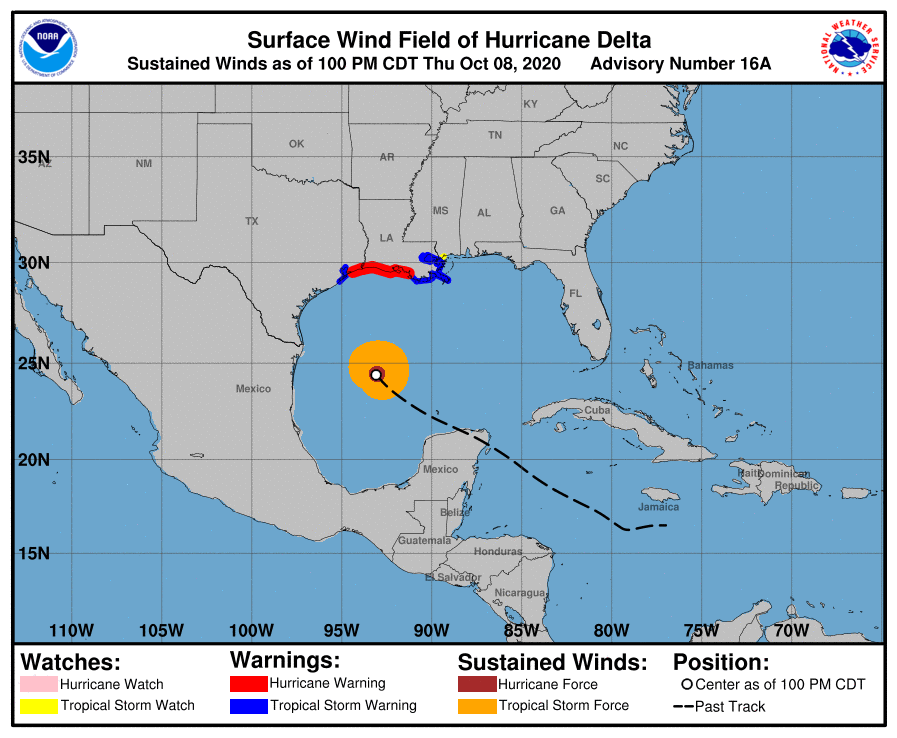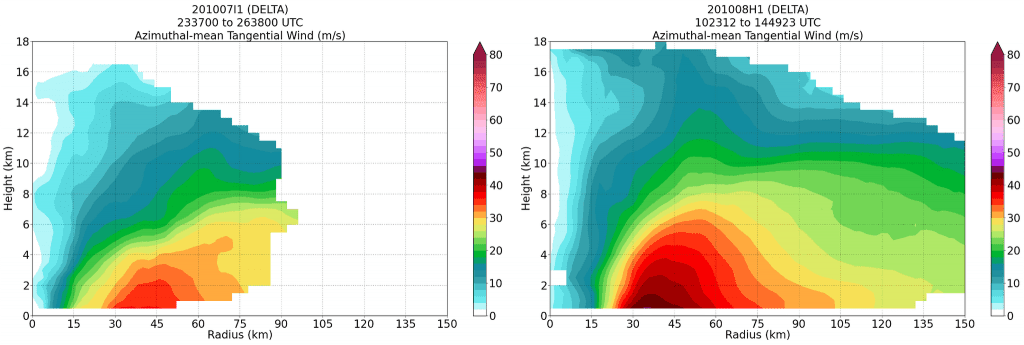NOAA and Air Force Reserve Hurricane Hunters continue around the clock monitoring of Hurricane Delta as it traverses the Gulf of America. Overnight flights on October 7 through midday October 8 found that Delta’s circulation is intensifying and expanding in size.
The latest Environmental Modeling Center (EMC) tasked mission by the NOAA P-3 hurricane hunter aircraft detected an increase in Delta’s peak wind speed to 105 mph, with a broad tropical storm force wind field extending about 125 miles outward from the center.

Hurricane scientists at AOML supporting these missions quality control data in real time prior to being used to optimize numerical weather prediction. Measurements from the NOAA P-3 Tail Doppler Radar (TDR) collected on the morning of October 8 illustrated that Delta’s circulation is stronger and better aligned in the vertical compared to data collected the previous day.
Information collected from TDR and other onboard instrumentation facilitate further research into processes important for tropical cyclone intensification. Many dropsondes deployed along the P-3’s flight track through the eye and eyewall can capture Delta’s wind, temperature, and moisture characteristics where severe conditions persist. These objectives have been added to the mission plan to address goals outlined in AOML’s Intensity Forecasting Experiment (IFEX).

EMC-tasked reconnaissance for Hurricane Delta continues tonight and tomorrow with P-3 missions prior to the system’s landfall. Additional science objectives may be appended to the flight plans as conditions within the system’s core and environment evolve.
Hurricane Delta is forecasted by the National Hurricane Center (NHC) to make landfall on the northern Gulf coast the evening of Friday, October 9. NOAA’s P-3 aircraft will continue collecting observations prior to Delta’s landfall to provide the latest information to forecasters and numerical models.
For details about reconnaissance aircraft missions, please see NOAA’s official Plan of the Day.
For the latest information about tropical cyclones and other weather systems, visit the NOAA National Weather Service National Hurricane Center.
For information on numerical prediction of tropical cyclones, visit the NOAA National Centers for Environmental Prediction Environmental Modeling Center.
